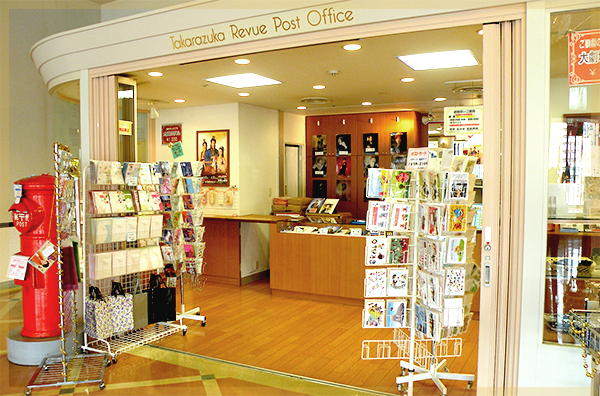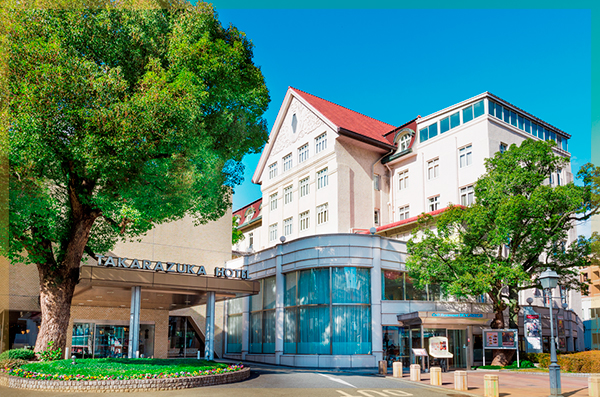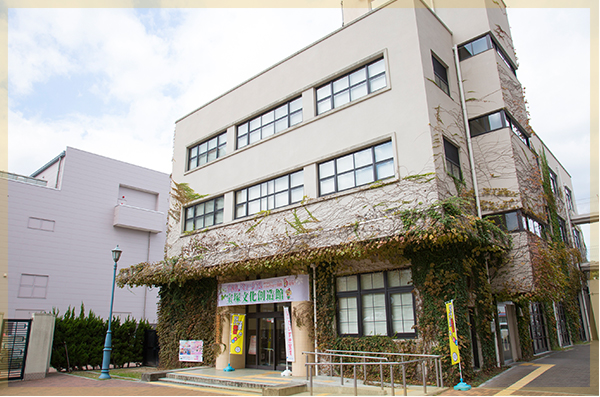Our top picks
The Takarazuka Revue is the first thing most people think of when they hear the word Takarazuka. A big reason that many people are wild about the Takarazuka Review is doubtless the dashing figure of the otokoyaku—women who play men’s roles. Takarazuka’s “stars among stars,” otokoyaku are the chosen few who have beaten out about 20 other competitors to reach their exalted status.
These stars use their talent to the fullest in highly entertaining shows that feature gorgeous sets and costumes and that constantly push the limits of cutting-edge stage performance. Another draw of the Takarazuka Revue is that ticket holders get to enjoy both a play and a revue in one sitting!
But words don’t do the Takarazuka Revue justice—you really have to go and see for yourself what it’s all about.
Seeing a show at the Takarazuka Grand Theater is like nothing else you’ll experience: the grand staircase, the apron stage, the powerful sounds of the accompanying live orchestra, and of course the stars who perform their musical stage magic. We highly recommend a performance at the Takarazuka Grand Theater.
More than anything, what makes the Takarazuka Revue special is its cast—consisting entirely of unmarried women. The performers are split into two categories: otokoyaku, men’s roles, and musumeyaku, women’s roles. Storylines span the globe and human history, and include everything from original works to adaptations of manga and science fiction tales. The Takarazuka Revue comprises five troupes—Flower, Moon, Snow, Star, and Cosmos—and each boasts its “top star,” the otokoyaku, and an accompanying heroine, the musumeyaku. There is also the Senka, a group of specialists who appear in any of the troupe’s productions as needed. Each performance, at either the Takarazuka Grand Theater or the Tokyo Takarazuka Theater, consists of a play (of about 90 minutes) and a revue (of about 60 minutes). In the finale, the stars descend the grand staircase in what is known as the “parade.”
Don’t forget to bring opera glasses when you see a show. If you happen to forget them, there’s no need to fret; you can rent a pair at the theater. You can purchase a program for 1,000 yen. It’s okay to eat and drink before the show begins and during intermission.
Inside the theater, there are restaurants and cafés selling light meals and desserts. There’s no dress code, so wear what you like. However, just in case you find the air conditioning a bit cool, bring a light shawl or something extra to put on. Please do not film or record during performances. However, don’t forget to take a commemorative photo in the lobby before the curtain goes up!
At a Takarazuka show, it is normal for the audience to clap along with the performers. Start by clapping in time with the other audience members until you get the hang of it. By the way, don’t shout or whistle at the performers, or talk during performances.
Here are some other rules to follow to ensure you don’t bother the performers or other audience members while you enjoy this magical experience.
•Don’t lean forward in your seat.
•Be seated before the performance starts.
•Turn off your phone.
You can purchase Takarazuka Revue tickets online or at convenience stores. However, since shows sometimes sell out, you may consider pre-registering as a member (on Japanese website only) and be eligible for early ticket sales. If you want front-row seats, join the Takarazuka fan club, called the Takarazuka Tomo no Kai (on Japanese website only). Although there’s an annual fee, you get the option of purchasing front-row seats.
To buy tickets on the day of a show, the theater’s ticket counter opens at 10:00 a.m. (9:30 for 11:00 a.m. shows). You can purchase “B” tickets, which are in the 17th (back) row of the second tier. Once seats are sold out, standing room tickets will go on sale. The standing room area is behind row 29 in the first tier, and ticket holders will be admitted starting 40 minutes before the show in the order of their ticket numbers.
If you’re coming to see a Takarazuka show as part of your trip to Japan, ask your travel agent to book tickets. Hankyu Travel and other travel agencies offer private shows, which might even give you some front row seats.
On the Takarazuka Revue official website, there’s a section (in Japanese only) showing you some great places to take a commemorative photograph of your visit to the Takarazuka Grand Theater.
The Takarazuka Revue Post Office is in the lobby of the Takarazuka Grand Theater. Although it looks more like a chic store, the charming retro mailbox at the entrance tells you it’s really a post office. If you mail letters from here, your mail will be postmarked with a stamp unique to the Takarazuka Grand Theater Post Office. You can see what the postmark looks like on the Japan Post website. It changes every year, so you can mail letters to yourself and have fun building up a Takarazuka postmark collection.

Purchase a souvenir of your visit to the Takarazuka Revue at the Quatre Rêves store, known among fans simply as “Quatre.” Just next to the theater’s ticket gate, its wide variety of offerings includes programs, portraits of the performers, and goods designed by the stars themselves. There are other Quatre Rêves stores, in Tokyo and Osaka, but the store in the Takarazuka Grand Theater has the largest selection of goods. And since the store is outside the theater, you don’t need to have tickets to a show to purchase souvenirs.

Opened in 1926, the classically styled Takarazuka Hotel is the official hotel of the Takarazuka Grand Theater. The main building of the hotel still retains the modernist style in which it was designed. Takarazuka fans love this hotel for its dinner shows and as a meeting place for the fan club. The hotel has exhibits of costumes from the Takarazuka Revue, the shan-shan decorated shields held by performers, and curtains, formerly used at the Grand Theater, with a design based on a painting by renowned artist Ryōhei Koiso. The Takarazuka Hotel is also where world-famous manga artist Osamu Tezuka held his wedding.

The Takarazuka Bunkasōzōkan (Takarazuka Renaissance Hall of Performing Arts) housed the Takarazuka Music School up until 1998. On the first floor is a theater and on the third floor are rental studios. The second floor houses the Sumire Museum, where items related to the Takarazuka Music School and the Takarazuka Revue are on display to the public.
Like a Mecca for Takarazuka fans, the museum has videos of actual music school lessons and all sorts of documents from the Takarazuka Music School and Takarazuka Revue. There are also graduation photos from throughout the years and posters of past performances, so visitors can search these tosee what today’s top stars looked like when they were younger.
The Takarazuka Renaissance Hall of Performing Arts is only about five minutes’ walk from the Takarazuka Grand Theater, so by all means drop by.
